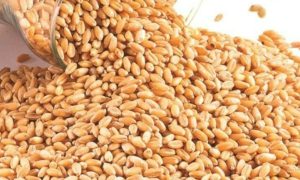Philippines wheat demand remains strong

The Philippines is forecast to import 7.2 million tonnes of wheat in 2025–26, maintaining its position as the world’s fifth-largest importer. Rising milling wheat demand offsets flat feed wheat use. The US leads in milling wheat supply, while Australia dominates feed wheat. Strong food-sector growth, especially for premium bakery products, is driving increased wheat consumption nationally.
THE PHILIPPINES is forecast to maintain its position as one of the world’s major wheat importers in the marketing year to June 2026, although there is expected to be a small change to the domestic demand profile due to a plateauing of stockfeed consumption against stronger milling wheat demand.
While The Philippines produces significant quantities of corn and rice, the country is entirely dependent on wheat imports to meet the nation’s human consumption and animal feed requirements, as the local climate is not conducive to its cultivation.
Imports up
According to the July global supply-and-demand update from the US Department of Agriculture, wheat imports in 2025-26 are expected to be 7.2 million tonnes (Mt), making it the world’s fifth-biggest international wheat buyer. This is 5.9 percent higher than the 6.8Mt imported in 2024-25 and 4.1pc above the official 2023-24 figure of 6.92Mt, when the South-east Asian archipelago took sixth and seventh places on the global trade table, respectively.
The US is expected to remain the country’s key supplier of milling wheat, while Australia holds the gong as the nation’s primary supplier of feed wheat. Despite being a major exporter of milling wheat into many Asian destinations, the perception persists among Philippine millers that Australia is primarily a feed of wheat origin. Based on trade data for the 10 months from July 2024 to April 2025, the US maintained a milling-wheat market share of 77pc, while Australia accounted for more than 99pc of feed wheat shipments.
In the 2024 calendar year, The Philippines was the second largest destination for US wheat exports, with shipments of 2.7Mt valued at US$735.7 million. In the same period, Australian wheat exports to The Philippines totalled 2.5Mt, 12.8pc of Australia’s 2024 export program and third by volume behind Indonesia and China. This was down from 2.8Mt in 2023, which was 9.6pc of that year’s campaign. Official Australian export data for the 11 months to the end of May 2025 has executed wheat sales to the Philippines at 2.67Mt, 14.3pc of the total wheat program, up from 2.32Mt in the previous corresponding period, and second to Indonesia on 3.21Mt.
The Philippines’ tropical climate is not conducive to long-term storage of wheat, which means that carry-in to each season is minimised, and necessitates a hand-to-mouth bulk delivery pattern throughout the year. Many domestic storages lack the temperature and moisture control mechanisms crucial to the extended, hygienic and pest-free storage of wheat in the nation’s high-humidity environment. The USDA’s Foreign Agricultural Service team in Manila is calling the 2025-26 carry-in just under 1Mt, which puts total supply at almost 8.2Mt against 800,000t and nearly 8.3Mt respectively, a season earlier.
Consumption rising
According to FAS, total wheat consumption in The Philippines will increase by 1.4pc from 7.05Mt in 2024-25 to 7.15Mt in the current marketing year as population growth, and a shift in dietary preferences toward wheat-based products drive stronger food sector demand for higher-protein wheat. Consumption of milling wheat is pegged at 3.75Mt in 2025-26, 2.7pc higher than the 3.65Mt consumed in 2024-25, itself 4.3pc higher than the 3.5Mt of food sector demand in the 2023-24 season.
FAS Manila reports an increase in the demand for both high-end products, such as garlic and cheese buns, and lower-end products, such as pandesal and noodles, while there is limited growth in the demand for mid-ranged foodstuffs, such as flavoured bread. The increase in demand for high-end products has reportedly been the primary driver of price increases for flour, bread, pasta, and other cereal-based foods over the past three years.
Feed wheat utilisation has remained steady at 3.4Mt over the past couple of years, and the FAS currently expects a repeat in the 2025-26 marketing year, given competitiveness against corn and strong demand from the aquaculture sector as a protein source substitute for soybean meal. Generally, feed wheat is used in animal nutrition formulations as a partial substitute for feed corn whenever there are supply gaps, or when feed wheat prices encourage the substitution of corn in livestock rations. However, local mill operators tend to prefer corn due to its physical properties and better nutritional qualities.
Feed inclusion at attractive price
The price of imported feed wheat has decreased relative to domestic corn values in the first half of 2025. This has pushed wheat inclusion rates in many animal feed formulations to the higher end of expectations, and a continuation into the current marketing year could see feed wheat demand exceed the current estimate, potentially pushing imports even higher than the USDA’s July forecast.
Production of corn is expected to increase slightly year on year from 8.2Mt to 8.3Mt, following the same incremental increase in 2024-25, but it remains in line with the five-year average. The growth has reportedly been driven by a less intense dry season, particularly the first quarter of 2025, and increased technical knowledge of farmers in handling fall armyworm infestations.
Corn consumption is expected to rise from 9.9Mt in 2024-25 to 10Mt in the current marketing year, given the sustained demand for feed corn from the poultry industry, both broiler and layers, the pet food sector, and aquaculture industries, alongside the growing food, seed, and industrial demand, especially for corn-based snacks.
Total feed and residual use of corn in the 2025-26 marketing year is pegged at 5.6Mt, compared to 5.55Mt a year earlier, with food, seed, and industrial consumption marked at 4.4Mt against 4.35Mt in 2024-25. A corn import program of 1.75Mt in the 2025-26 marketing year will be required to support current demand projections.
To Read more about Wheat News continue reading Agriinsite.com
Source : Grain Central

















